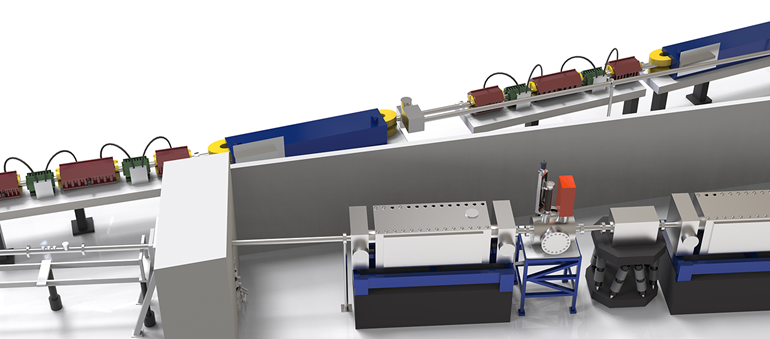In 2012, particle accelerators hit the headlines when researchers at CERN announced the discovery of the Higgs boson. This breakthrough discovery resulted from decades of research and experimentation and billions of dollars of investment, with the large hadron collider (LHC) representing the world’s largest scientific collaboration to date.
The LHC is the world’s largest high energy particle accelerator, comprising of a main beamline almost thirty kilometers in circumference and a multi-story complex containing a multitude of bespoke vacuum systems and particle detectors.
Researchers at CERN use the LHC to study high energy particle collisions with the hope of gaining insights into the fundamental laws of physics.

Image Credit: UHV DESIGN LTD
Around the world, other particle accelerators are typically used with a different purpose: to generate extremely high intensity and energy electron beams and harness the resultant synchrotron radiation as a light source to probe sample chemistry and structure in beamline experiments.
Despite fundamental differences in purpose and size, all particle accelerators depend on ultra-high vacuum (UHV) systems and accompanying diagnostics to measure the position, intensity, profile and divergence of the beam.
How is Beam Profile Measured?
Since all particle accelerators are completely bespoke, there is no universal method of measuring beam intensity and position. This portion of the article focuses on the LHC as it is the most familiar system worldwide.
CERN’s collider tunnel houses two parallel beamlines, which accelerate particles to speeds approaching that of light. Particles are accelerated by radiofrequency (RF) cavities, while superconducting electromagnets are used to focus them into counter-rotating orbits.
The energy of the particles is increased incrementally until a predetermined level is reached – then the beams are made to intersect, and the particles collide.
Beam profile is a measurement of the size and shape of a beam along with the intensity of particles present within it. The profile of a beam is commonly measured using a ‘wire scanner’: this works by rapidly scanning a fine wire through the beam.
The beam profile can be derived from the measurement of the particle shower that results from collisions between the beam and the atoms that make up the wire.
UHV Design Products for Particle Accelerators
UHV Design a leading supplier of manipulators for ultra-high vacuum applications such as accelerator beam diagnostics.
Having worked closely with CERN and other pioneering particle physics facilities, UHV Design has developed a range of specialized multi-axis sample manipulators and linear actuators to meet the exacting specifications of accelerator beam diagnostic equipment.
To find out more about beam intensity and position monitoring solutions from UHV Design, get in touch with a member of the UHV Design team today.

This information has been sourced, reviewed and adapted from materials provided by UHV DESIGN LTD.
For more information on this source, please visit UHV DESIGN LTD.